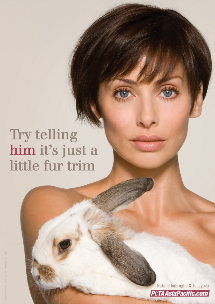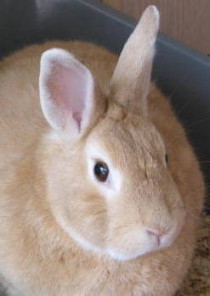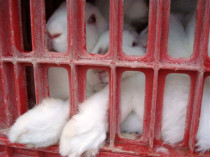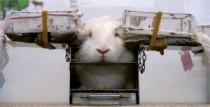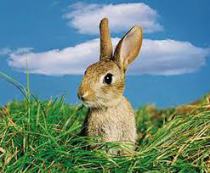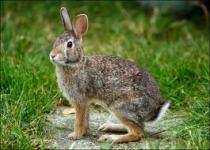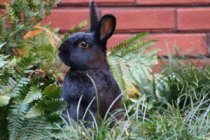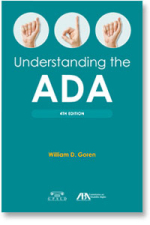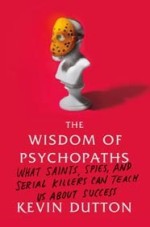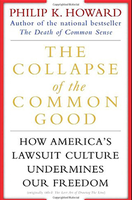The Rabbit, Poster Child for Animal Rights
What’s the difference between a full-length fur coat and just a little fur trim? Nothing, says famed Australian singer, actor, and model Natalie Imbruglia, who took time out of her busy schedule to pose for a sexy new anti-fur ad for People for the Ethical Treatment of Animals (PETA). In the ad, Imbruglia is holding a rabbit to her naked chest next to the tagline “Tell Him It’s Just a Little Fur Trim.”
In her blockbuster hit “Torn,” Natalie sings about being “bound and broken on the floor.” She could have been describing scenes from the undercover video footage obtained on fur farms in China, which shows that animals’ heads were smashed against the ground and that animals were still breathing and blinking as they were skinned alive. Read more
The Rabbit: "Poster Child" for Animal Rights
Encyclopedia Britannica
Advocacy for Animals
"I should be the poster child for animal rights. I am slaughtered for my fur. I am slaughtered for my meat. I am factory farmed in rabbit mills. I am tortured by
vivisectors in their ‘labs.’ I am the third most commonly ‘euthanized’ companion animal. I am hunted and snared. I am the object of blood sports. I am often cruelly abused. I am given as a live
animal prize. I languish in pet stores. Why aren’t I?"
—Poster from RabbitWise, Inc., a rabbit advocacy organization.
This rabbit makes a very good point. One would be hard-pressed to find another animal upon whom so many exploitative and abusive practices converge. The rabbit, in both
its domesticated (Oryctolagus cuniculus) and wild (various genera worldwide, notably Sylvilagus, the cottontail rabbit of North and South America) species, is perhaps the prime exemplar of prey
animals. It is a gentle, herbivorous, unassuming, and relatively silent creature. This mildness, which is so charming to observe and contemplate, unfortunately seems to practically invite the
rabbit’s exploitation in myriad ways by the stronger and more powerful—namely, humans.
Factory farmed and eaten as meat
Encyclopedia Britannica
Advocacy for Animals
According to the Humane Society of the United States (HSUS), some 2 million rabbits are raised and killed for meat in America each year. Rabbits are raised for meat in
the usual crowded, unsanitary conditions that are the standard in the factory farming of chickens and other animals: intensive confinement in wire cages
that hurt their feet, near-complete lack of mobility, stress, health disorders, denial of veterinary care, and, nine or 10 weeks later, long-distance shipping in trucks to slaughter.
Rabbits are exempt from the Humane Methods of Slaughter Act (1958), which requires that animals killed at federally inspected slaughterhouses must be rendered unconscious before they are killed,
usually through a quick blow to the head. Because this rule does not apply to rabbits, they can be killed in any manner, no matter how abusive. The stunning may be done by breaking the rabbit’s
necks, but rabbits raised for meat are generally too large for this to be done easily, and many remain conscious and sensate as they are slaughtered. The method of killing can be bludgeoning with an
iron pipe, cutting the throat and hanging the rabbit to bleed out, decapitation, or shooting.
Rabbit Farming in Australia
Published on Oct 22, 2013
The cruel business of rabbit factory farming is being promoted by the Australian Government through the Department of Primary Industries and the CSIRO . These bunnies have just been rescued by Big Ears Sanctuary in Tasmania. The males are separate at the moment until desexing and vet checks for abscesses and disease from being kept in appalling conditions all their life . They were bound for the restaurants and meat markets in Australia. There are 100s of these cruel factory farms in Australia . They have been banned in the United Kingdom because of the cruelty, but our government for some strange reason encourages it. Australia is such a backward ignorant country when it comes to animal welfare, so sad , it prides it self on courage and bravery of its citizens.
Australian Legal Rabbit Farm
Published on May 19, 2012
Australia's hidden horrors . No need to say anything, this is self explanatory . RSPCA are aware of these factory farms in Australia , they are concerned. These rabbits are " grown " as meat rabbits for Australian restaurants, Butcher shops, Cole's Supermarkets. These " farms" are promoted and protected by the Department of Primary Industries.
Meat Rabbits, Solid Ground? Plus Chores And Cleaning The Barn. Happy Bunnies.
Published on Aug 28, 2013
The rabbits never do anything but sit in a cage. I wanted to clean the actual cages out on the two cages that have many rabbits. I took the rabbits out and put them in the goat cage we use to move the goats around and it was fun to watch them do there acrobatics and running around. While that was going on I had to clean the barn and get them all some garden greens. Its all in this video.
The Hobby Farm. Meat Rabbits and Breeding (graphic)
Meat Rabbits. The Arrival. JoeandZachSurvival
Meat Rabbits. Late Summer Update. I Have Lots Of Rabbits
Meat Rabbits. They Keep Coming. Some Must Leave. Update!
Meat Rabbits, Butchering, Start To Finish. **** GRAPHIC **** WARNING ****
Published on Jul 4, 2013
We have gone through the whole cycle of what it means to raise Meat Rabbits. during the videos we have raised, bred, raised again and now it is time. This video shows the first rabbits being butchered. This is a VERY GRAPHIC video at times. You will see the rabbits being shot and everything afterwards to get them in the freezer so be warned. Many of you have followed along and have learned from and right along with me and some have helped me learn as well. I think it only fitting that this video be posted so once again we can learn together.
Rabbit Processing
Published on Aug 10, 2012
Processing New Zealand White rabbits for our freezer. My kids, who are 8 and 5, had a science lesson in anatomy at the same time.
Factory farmed and killed for fur
Encyclopedia Britannica
Advocacy for Animals
The European-centered rabbit-fur trade (producing countries include France, Spain, Italy, Denmark, and Portugal) likewise breeds and raises rabbits in factory-like conditions that reduce the animals to mere commodities for profit. The most recent figures available (1997) were that France alone produced more than 70 million rabbit pelts in that year; the increasing popularity of fur indicates that the figure has since grown.
Contrary to the claims of the industry, fur is not a “by-product” of the rabbit-meat industry. The rabbits raised for their fur constitute a whole other population. The requirements of the meat and fur industries are at odds, and different production methods—and sometimes different breeds—are used in each. The velvety-soft fur of the Rex rabbit yields particularly high profits; New Zealand White and California White breeds are also commonly farmed for fur as well as meat.
The rabbits are bred frequently, live in crowded cages until separated at the age of about 7 weeks, and are killed at the age of 10-12 weeks (White rabbits) or 8-9 months (Rex rabbits). The bare wire mesh cages in which they are kept hurt their paws, which have no pads. Veterinary care is poor. The buildings in which the cages are kept may be cleaned only a few times a year, after several generations have lived and died there. The rabbits are unable to engage in any kind of normal social behavior or exercise. Stress and other psychological and physical damage are common.
Rabbits raised for their fur are stunned by electrocution or by a blow to the head (smashing against a wall); this method may be used to kill the rabbit or to merely stun it before the throat is slit and it is hung up to bleed out. Some incisions are made in the skin and the fur is then ripped off. This is done in full view of the still-living rabbits who are awaiting their own slaughter.
Further, HSUS investigations in 2006 and 2007 found that the practice of mislabeling real rabbit and other fur as “fake” is rampant in the clothing industry. Six major retailers were found to be selling such mislabeled products, which bore labels such as “polyester” and “ecological fur.” Analysis showed that the fur was real.
Exploited as pets
Encyclopedia Britannica
Advocacy for Animals
Rabbits are also bred as pets by small-scale breeders and in rabbit mills (equivalent to puppy mills), and then sold privately or in pet stores, or given away as prizes at carnivals and fairs. Customers usually buy rabbits on impulse, and pet stores rarely provide education regarding the care of a pet rabbit. The new owner is in all likelihood unprepared to care for a rabbit. Although rabbits make good pets in the right hands, they have very special needs, and lack of proper knowledge as to how to care for them leads to the sickness or death of a great many pets, especially after the Easter season, when rabbits are often bought and given to children as gifts. Thousands are surrendered to animal shelters, where they will be euthanized, and countless others are simply abandoned outdoors to their fates.
Abused in laboratories
Encyclopedia Britannica
Advocacy for Animals
The use of rabbits in biomedical and product testing is a longstanding and well-known practice. Their small size and docility, as well as the relatively inexpensive cost to obtain and breed them, make them desirable as test subjects. The American Anti-Vivisection Society (AAVS) reports that in 2004, the number of laboratory rabbits in use was over 260,000, and some 43 percent of those individuals were subjected to tests that caused pain, distress, or both, sometimes without any drug relief.
A previous Advocacy for Animals post (“Scientific Alternatives to Animal Testing”) described a very common test on rabbits, the Draize test: “A chemical, such as a cosmetic or pharmaceutical agent, is applied to the skin or eye of a rabbit. The results are supposed to indicate how toxic a chemical is to human skin. The inaccuracy of the Draize test has been recognized for many years.”
Rabbits are also used in vaccine, cardiovascular, reproductive, and other kinds of research, subjected to stress tests and infected with sexually transmitted diseases, for example. Living conditions in the laboratory are poor, as the rabbits are test subjects and as such are fed a controlled diet of pellets (rather than the hay and greens on which they normally live) and are kept in isolation. This results in boredom, illness, and stereotypical behavior such as chewing on cage bars and excessive licking. Rabbits are often killed after the test is over so that their organs can be examined.
Rabbits deserve better
Encyclopedia Britannica
Advocacy for Animals
The human relationship with rabbits is a complex one. Symbols of harmlessness and innocence, these furry and appealing animals are, on one level, almost universally beloved (except, perhaps, by the gardeners whose plants they eat); they are icons in cartoons and children’s books. Yet the nature of the animals themselves—their habits, their natural history, and their needs—as well as the many ways in which rabbits suffer at the hands of humans often seem to go unnoticed. Perhaps it is that, seeming so gentle, they are easy to ignore. These much-abused animals deserve to be treated in accordance with their value. It is time to finally notice the rabbits and stand up for them. Read more
PETA - People For The Ethical Treatment of Animals
Almost all of us grew up eating meat, wearing leather, and going to circuses and zoos. We never considered the impact of these actions on the animals involved. For whatever reason, you are now asking the question: Why should animals have rights. Read more
Champis - the herding rabbit
Who needs sheepdogs when there are... rabbits !
Run Rabbit Run
Wikipedia
On the farm, every Friday
On the farm, it's rabbit pie day.
So, every Friday that ever comes along,
I get up early and sing this little song
Run rabbit - run rabbit - Run! Run! Run!
Run rabbit - run rabbit - Run! Run! Run!
Bang! Bang! Bang! Bang!
Goes the farmer's gun.
Run, rabbit, run, rabbit, run.
Run rabbit - run rabbit - Run! Run! Run!
Don't give the farmer his fun! Fun! Fun!
He'll get by
Without his rabbit pie
So run rabbit - run rabbit - Run! Run! Run!
Rabbit, Wikipedia
Wikipedia
Rabbits are small mammals in the family Leporidae of the order Lagomorpha, found in several parts of the world. There are eight different genera in the family classified as rabbits, including the European rabbit (Oryctolagus cuniculus), cottontail rabbits (genus Sylvilagus; 13 species), and the Amami rabbit (Pentalagus furnessi, an endangered
species on Amami Oshima, Japan). There are many
other species of rabbit, and these, along with pikas and hares, make
up the order Lagomorpha. The male is called a
buck and the female is a doe; a young rabbit is a kitten or kit. Read more
Gainesville Rabbit Rescue (Florida)
Gainesville Rabbit Rescue is a non-profit organization founded by 2 University of Florida students. GRR’s mission is to rescue, rehabilitate, and adopt out rabbits to
loving homes, as well as educate current and potential rabbit owners. GRR does not turn away any rabbit regardless of disability, illness, age, or temperament. Rescued rabbits are nursed back to
optimum health and spayed/neutered before being placed up for adoption. The organization’s main goal is to see that the right rabbit is placed with the right family, so GRR screens all adoptive
families to ensure the rabbit is placed in a secure and loving home.
All rabbits live in foster homes with dedicated volunteers, seeing that they are litter box trained, well fed, and well cared for, with expenses more often than not
coming from their own pockets. GRR has chapters operating in Gainesville, Orlando, and Daytona.
Currently Gainesville Rabbit Rescue has 100+ rabbits in its care, and has an ever growing waiting list. Read more

